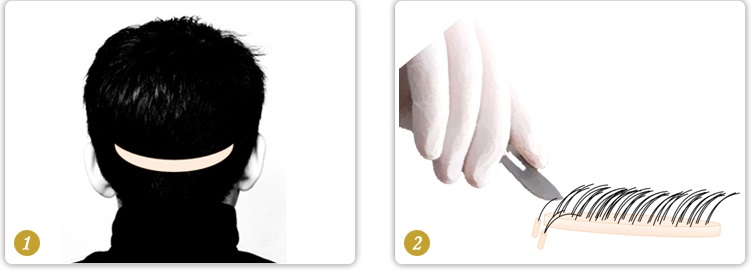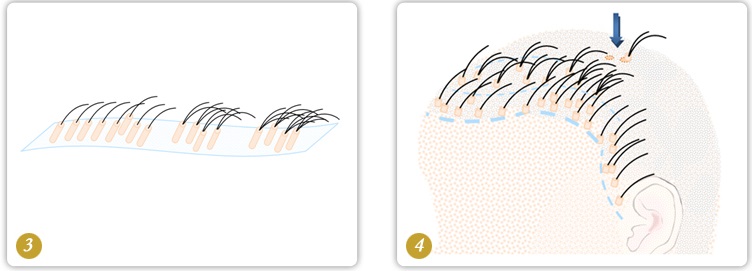The two most commonly used techniques for hair transplant are FUT-Strip Method and FUE.
Every method has its pros & cons, and will meet people’s different needs and expectations. It is generally believed that FUT – Strip Method is more suitable for performing more extensive transplantation and those who care less about having scars in the rear part of their scalp.
On the other hand, FUE is suitable for limited transplants and people who do not want to have scars on their occipito-posterior. Besides these considerations, our physicians will discuss with you which method best suits your hair condition, your expectation and budget. The major difference between these two methods lies in the way of extracting follicles, the preparation required and the healing process after surgery.
What’s FUT – Strip Method?
Before surgery, the doctor will let you know the approximate number of follicles required, the location and size of the “donor area”, the extent of the “recipient area”, the shape of the reconstructed hairline and the resulting hair density. FUT-Strip Method involves the removal of a patch of skin with follicles under the condition of local anesthesia. The follicles will be divided into small units under the microscope, so that each unit will contain 1-4 follicles. These units of hair will be kept in normal saline so as to make them remain active. Then, the doctor will transplant them to planned areas.
Quantity and orientation of transplanted hair have strong bearing on the visual effect, so the doctor will carefully consider the number of follicle in each transplanted unit, using units with several follicles for the rear part while reserving those with just one follicle for the front.
Scabs will start to form in twenty-four hours’ time and the wound will heal completely in 4-14 days while hair will start to grow in 10-16 weeks’ time after surgery. Currently, FUT – Strip Method is still in the mainstream and mature surgical techniques will render scars barely noticeable.


